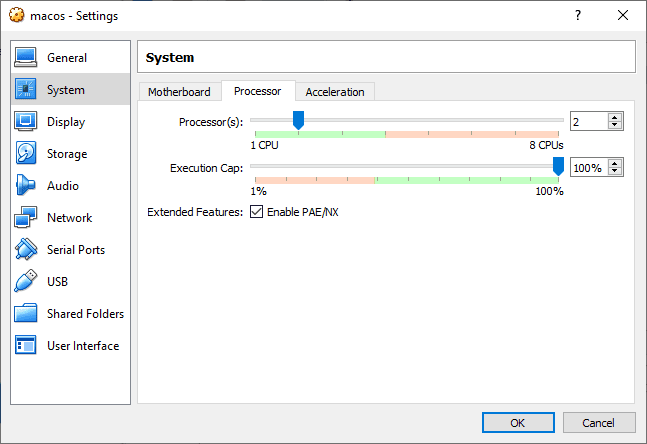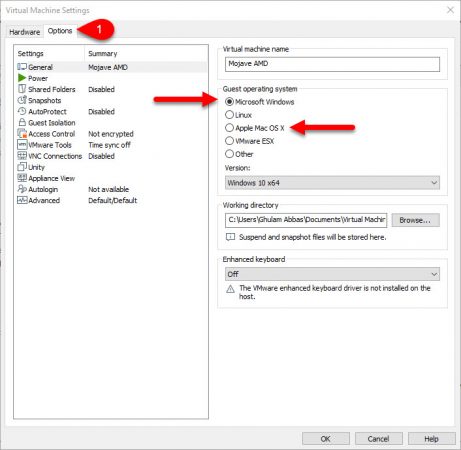

- #MAC OS X VM ON AMD PROCESSOR MAC OS#
- #MAC OS X VM ON AMD PROCESSOR INSTALL#
- #MAC OS X VM ON AMD PROCESSOR UPDATE#
- #MAC OS X VM ON AMD PROCESSOR PATCH#
- #MAC OS X VM ON AMD PROCESSOR PRO#
Systemd-boot distributions like Pop!OS will have to do things differently. We’ll be covering Grub 2 here because it’s the most common. The best way of going about this is changing your kernel commandline boot options, which you do by editing your bootloader’s configuration files. Once you’ve enabled these features, you need to tell Linux to use them, as well as what PCI devices to reserve for your vm. These features are usually titled something like “virtualization support” “VT-x” or “SVM” - IOMMU is usually labelled “VT-d” or “AMD-Vi” if not just “IOMMU support.” The exact name and locations varies by vendor and motherboard. Provided you have hardware that supports this process, it should be relatively straightforward.įirst, you want to enable virtualization extensions and IOMMU in your uefi. Vega and Fiji seem especially susceptible)
#MAC OS X VM ON AMD PROCESSOR MAC OS#
300 series cards may also have Mac OS specific compatibility issues.

Mainstream and budget chipsets only, HEDT unaffected.)
#MAC OS X VM ON AMD PROCESSOR PATCH#

You can check here (or here for AMD) to confirm you have 2 different device IDs. Usually this means just 2 different models of GPU, but there are some exceptions, like the AMD HD 7970/R9 280X or the R9 290X and 390X.
#MAC OS X VM ON AMD PROCESSOR INSTALL#
A working install from part 1 of this guide, set up to use virt-manager.The vast majority of laptops are completely incompatible with passthrough on Mac OS. If you’ve arrived here without context, check out part one of the guide here. With that out of the way, let’s talk about what you need to get 3D acceleration up and running: If you find glaring errors or have suggestions to make the process easier, let us know on our discord.
#MAC OS X VM ON AMD PROCESSOR UPDATE#
The AMD kernel is only built for 10.15.0 and you will break your virtual machine if you update it.We’ve made every attempt to make this as straightforward as possible, but there’s a lot more ground to cover here than in the first part of the guide. ICloud, iMessage, FaceTime & Siri will not work at all.ĭo not update you virtual machine. You will need to do some tweaking to the virtual machine, which you can find in the "Post Installation Tweaks" page. The Mac App Store does work, but it will not work straightaway.
#MAC OS X VM ON AMD PROCESSOR PRO#
That means that apps like Final Cut Pro will not work at all on this. Things like the Launchpad will be extremely laggy, the Dock will be opaque and the virtual machine will not have multiple monitor support. You can use CPU-Z to check these if you're not sure.ĭue to VMware's graphics acceleration not being compatible with macOS, you will not have any graphics acceleration in your virtual machine. If you have an older CPU, again you should double check. Your CPU also needs to support the SSE4.1 instruction set in order to run macOS Sierra and newer. Modern CPUs will definitely support this, but if you have an older CPU, you may want to double check. Make sure that Virtualization/AMD-V is supported by your CPU and is enabled in your BIOS. Modern CPUs = Anything made from 2010 and onwards

I see that you want to make a macOS VM in VMware on your AMD CPU but have no idea how or you need a macOS virtual machine.


 0 kommentar(er)
0 kommentar(er)
